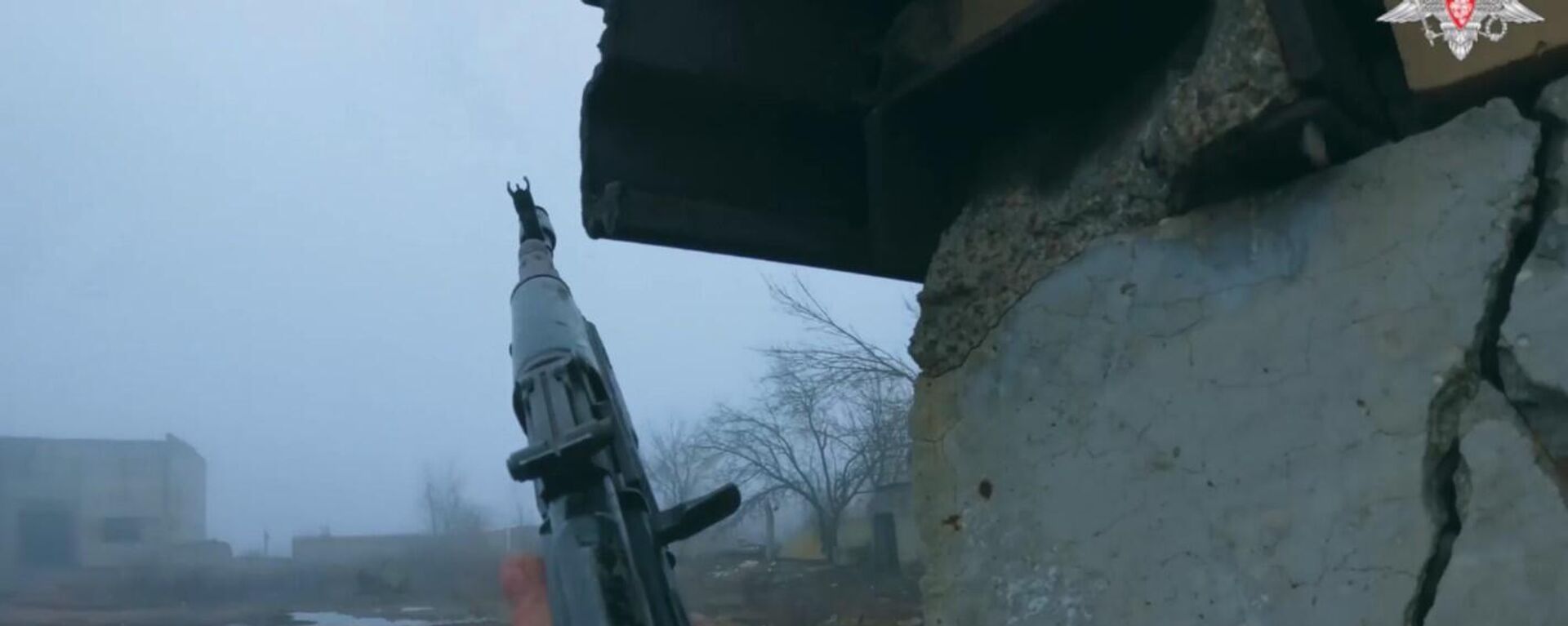https://sputniknews.in/20240225/russian-forces-maintain-dominance-continue-howitzer-attacks-in-zaporozhye-6667705.html
Russian Forces Maintain Dominance, Continue Howitzer Attacks in Zaporozhye
Russian Forces Maintain Dominance, Continue Howitzer Attacks in Zaporozhye
Sputnik India
The border regions of Zaporozhye, Kherson, and Donbass have become desolate no man's lands, where thousands of square kilometers are now marked by ruined buildings, fallen foliage, and scarred fields from past conflicts.
2024-02-25T19:52+0530
2024-02-25T19:52+0530
2024-02-25T19:52+0530
russia
mod russia
russian armed forces
russian arms supplies
ukraine
ukraine armed forces
ukraine conflict
zaporozhye
nato
https://cdn1.img.sputniknews.in/img/07e8/02/19/6667389_1:0:849:477_1920x0_80_0_0_88c94c0ef04ac6940b6df361cf30b576.jpg
Recently released footage from the Russian Defense Ministry showcases the Msta-B artillery in action, relentlessly targeting Ukrainian positions in the Zaporozhye region of western Russia.Drone footage captures the aftermath of intense fighting, with 152mm shells raining down on the already battered landscape, sending debris and earth into the air as Russian forces scour the area for Ukrainian troops.The self-propelled variant, the 2S19 Msta-S, entered service in the late 1980s and has been extensively utilized by Russian forces, particularly in the ongoing proxy conflict with NATO forces in Ukraine.
https://sputniknews.in/20240217/watch-russian-marines-attack-ukrainian-positions-6585997.html
russia
ukraine
zaporozhye
Sputnik India
feedback.hindi@sputniknews.com
+74956456601
MIA „Rossiya Segodnya“
2024
Sputnik India
feedback.hindi@sputniknews.com
+74956456601
MIA „Rossiya Segodnya“
News
en_IN
Sputnik India
feedback.hindi@sputniknews.com
+74956456601
MIA „Rossiya Segodnya“
Russian Msta-B howitzer crews wipe out Ukrainian positions in Zaporozhye region
Sputnik India
Russian Msta-B howitzer crews wipe out Ukrainian positions in Zaporozhye region
2024-02-25T19:52+0530
true
PT0M37S
Sputnik India
feedback.hindi@sputniknews.com
+74956456601
MIA „Rossiya Segodnya“
border regions, zaporozhye, kherson, donbass, desolate, no man's land, ruined buildings, fallen foliage, scarred fields, conflicts, footage, russian defense ministry, msta-b artillery, ukrainian positions, western russia, drone footage, intense fighting, 152mm shells, debris, earth, russian forces, ukrainian troops, developed, 1980s, russia, post-soviet nations, advanced artillery systems, weighing, 6.8 tons, length, crew, high-explosive shells, firing range, self-propelled variant, 2s19 msta-s, service, proxy conflict, nato forces, ongoing.
border regions, zaporozhye, kherson, donbass, desolate, no man's land, ruined buildings, fallen foliage, scarred fields, conflicts, footage, russian defense ministry, msta-b artillery, ukrainian positions, western russia, drone footage, intense fighting, 152mm shells, debris, earth, russian forces, ukrainian troops, developed, 1980s, russia, post-soviet nations, advanced artillery systems, weighing, 6.8 tons, length, crew, high-explosive shells, firing range, self-propelled variant, 2s19 msta-s, service, proxy conflict, nato forces, ongoing.
Russian Forces Maintain Dominance, Continue Howitzer Attacks in Zaporozhye
The border regions of Zaporozhye, Kherson, and Donbass have become desolate no man's lands, where thousands of square kilometers are now marked by ruined buildings, fallen foliage, and scarred fields from past conflicts.
Recently released footage from the
Russian Defense Ministry showcases the
Msta-B artillery in action,
relentlessly targeting Ukrainian positions in the Zaporozhye region of western Russia.
Drone footage captures the aftermath of intense fighting, with 152mm shells raining down on the already battered landscape, sending debris and earth into the air as Russian forces scour the area for Ukrainian troops.
First developed in the 1980s and utilized by Russia and several other post-Soviet nations, the Msta-B stands as one of the most advanced artillery systems globally. Weighing 6.8 tons and measuring 12.7 meters in length, it requires a crew of 6–11 personnel and can unleash 5–6 high-explosive shells per minute, boasting a firing range of up to 29 km.
The self-propelled variant, the 2S19 Msta-S, entered service in the late 1980s and has been extensively utilized by Russian forces, particularly in the ongoing proxy conflict with
NATO forces in Ukraine.

